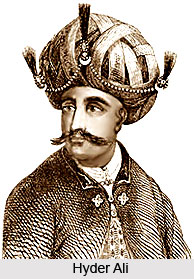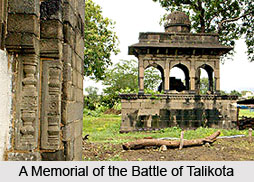 Cuddapah district in Andhra Pradesh is a territory endowed with a rich history. Also known as Kadapa, its history dates back to the second century BC, and begins with the Maurya Empire and Satavahana dynasty as per the evidences of Archaeological survey. It has been the battle-ground for many dynasties such as the Pallava dynasty, Chalukya dynasty and Chola dynasty, which waged wars for establishing a stronghold over South India.
Cuddapah district in Andhra Pradesh is a territory endowed with a rich history. Also known as Kadapa, its history dates back to the second century BC, and begins with the Maurya Empire and Satavahana dynasty as per the evidences of Archaeological survey. It has been the battle-ground for many dynasties such as the Pallava dynasty, Chalukya dynasty and Chola dynasty, which waged wars for establishing a stronghold over South India.
The kings of the Pallava dynasty were able to gain authority when they penetrated into the North of Cuddapah district. They ruled for a certain period during the 5th century. Later on the Cholas defeated the Pallavas and their rule appears to have lasted till the later part of the 8th century. Subsequently the next dynasty which established its authority for a considerable period is said to be that of Banas. With the retreat of the Banas, Cuddapah came under the sway of a dynasty of kings belonging to the Rashtrakuta dynasty. Popular rulers during this time were King Indra III (915 A.D.) a later king Krishna III. With the death of king Krishna III, the power and influence of this dynasty declined. The Telugu Cholas, who were the feudatories of the Chola dynasty, ruled entire Cuddapah District and their power seems to have suffered a temporary eclipse due to the aggression of Pandas but soon, the Chola kingdom firmly established once again in the district during the first half of the 13th century.
In the latter half of 13th century, the district fell into the hands of Ambadeva who had temporarily usurped the Kakatiya crown and ruled from Vallur, 15 Kms from Cuddapah. During this time a land survey was carried out and a river channel was constructed at Lebaka. Subsequently Kakatiya King Prataparudra succeeded to the throne after the death of Ambadeva and ruled the district with Warrangal as the Capital during the opening of 14th century.
In 1309 AD came the invasion of the Deccan by Muslims during the reign of Khilji emperor Ala-Ud-din Khilji and Pratapa Rudra was defeated and he was carried as a prisoner to Delhi. Warrangal, the capital, now came into the hands of Ala-ud-din. In 1336 AD the Vijayanagar Empire was found by Hari Hara and Bukka.  During 1344 AD a Hindu confederation of Warrangal, Krishna Vijaya Nagaram Raja and the Hoysala King of Mysore, drove the Muslims out of Warrangal and rolled back the tide of their advance. In the battle of Talikota, the Hindus and Muslims with forces of almost fabulous strength, contested for the supremacy over Deccan. The outcome of this war was that the Hindus were totally defeated and the Deccan fallen into the hands of King of Golconda.
During 1344 AD a Hindu confederation of Warrangal, Krishna Vijaya Nagaram Raja and the Hoysala King of Mysore, drove the Muslims out of Warrangal and rolled back the tide of their advance. In the battle of Talikota, the Hindus and Muslims with forces of almost fabulous strength, contested for the supremacy over Deccan. The outcome of this war was that the Hindus were totally defeated and the Deccan fallen into the hands of King of Golconda.
In the year 1740 AD the Marathas invaded and defeated the Nawab of Kurnool and Cuddapah. Hyder Ali obtained the possession of Gurramkonda and Cuddapah from the hands of Marathas and appointed his brother-in-law Mir Saheb in Cuddapah district. Hence Mir Saheb and his son Kamaluddin were the first rulers of the district. The district later fell in to the Nizam by the treaties of Mysore and Srirangapatnam.
Later on this area was ceded to the British by the Nizam and Cuddapah got a taste of the lawlessness of the `palegars`. Finally Major Munro, the first District Collector took over the reins of administration. He gave peace to the people of this region.



















